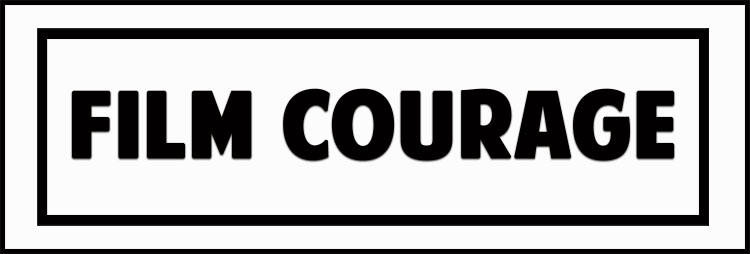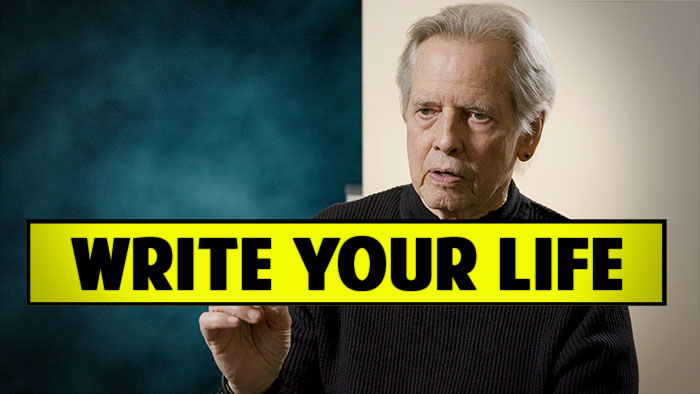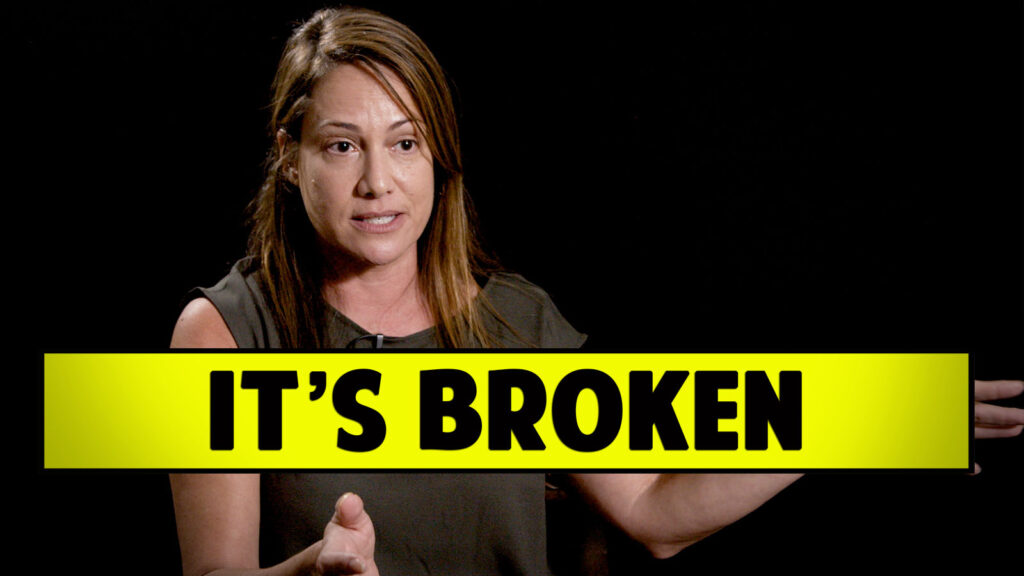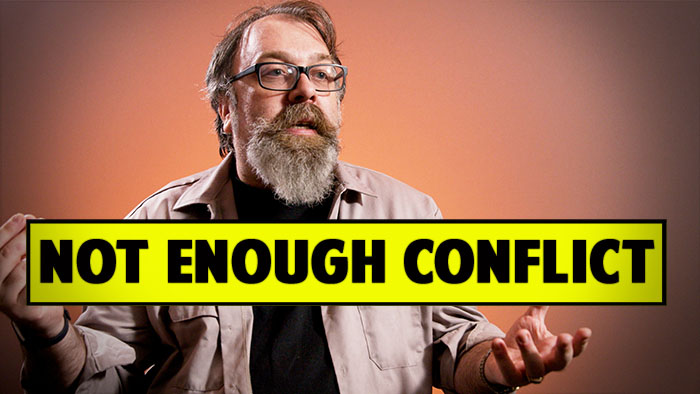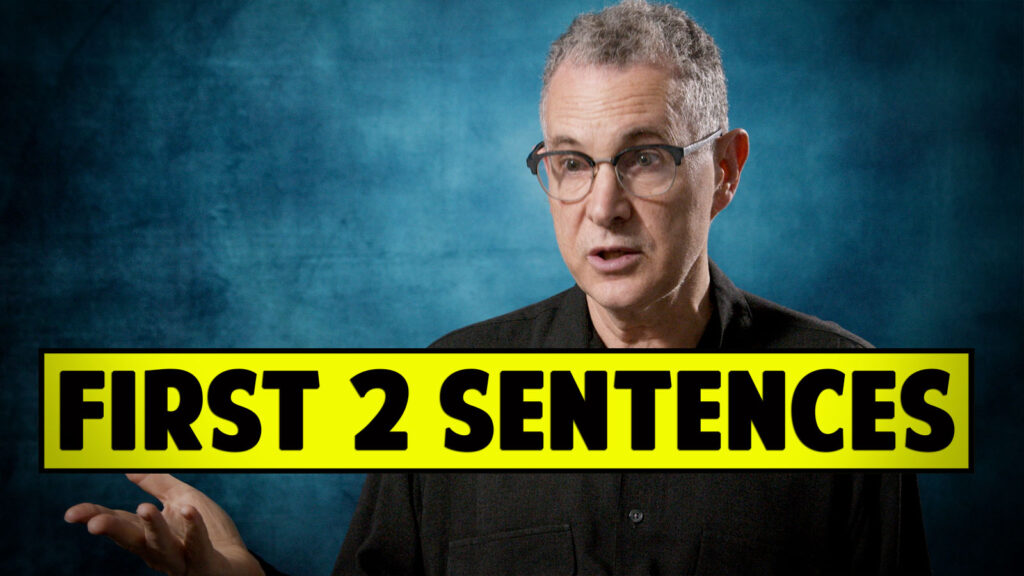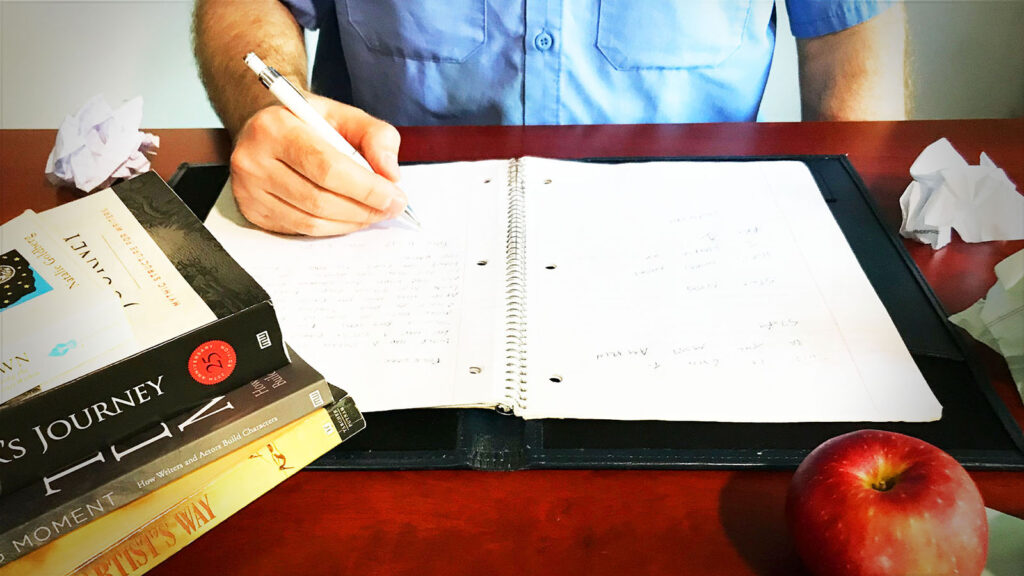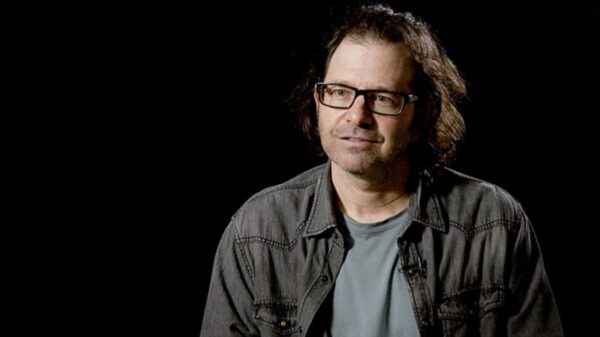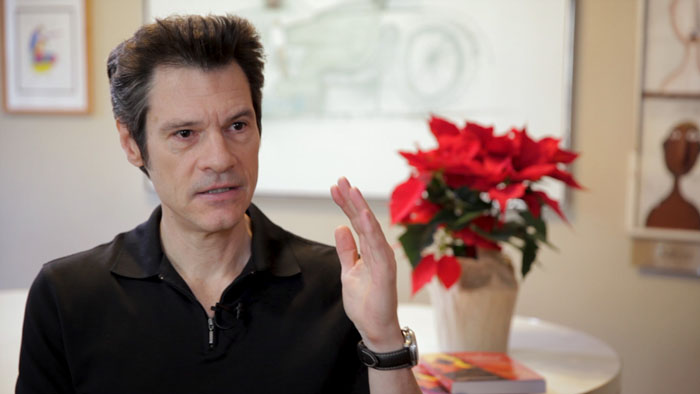
Watch the video interview on Youtube here
Film Courage: What does an outline look like?
Mark Sanderson, Screenwriter and Author: Well, for me on these assignments that I do they are usually 10 or 12 pages. It’s the entire story, treatment and it’s not just line-by-line. I mean there are some outlines that it’s just a line, literally. But for television they’re 8 acts, so everything has to be broken down. But I write it as a story, so if you were to sit down and read it, you’d be reading the story of the movie, which I think is essential to create, in fact I’ve had friends that do this “Oh, I’m just going to sit down and I have the vague idea and I’m just going to write.”
And I’m like “You’ll be lost in the barren wasteland of Act 2. With no water, you’ll be in the desert lost and you’ll wonder how you’re going to trudge through the 75-pages or whatever.” I’m a huge advocate of starting outlines before starting writing and I know it’s probably 50, 60, 70 percent of the work because it makes the load a lot easier and you can write a faster screenplay if you have an outline.
Now that doesn’t say there is no room for changes or improvising, but if you don’t have a solid roadmap going in…it’s almost like a pre-draft of a first draft. And I’m not an advocate of what people say the vomit draft or just spill it out. But I don’t have the luxury of spilling it out on my assignment jobs, I don’t. I really have to turn in (let’s say on a ten scale) turn in probably an eight…an eight out of ten…because I’m now holding up development and I’ve also done rewrites on other screenwriter’s work/projects that means that the script that they had went through multiple drafts and still is not there. And they have a buyer, they have network who is waiting on the script and so I’ve also been hired to do rewrite job where I can come in. But it’s like a page one rewrite where the script that you have you can’t use any of it. The names yes, the concept yes but you basically…but that’s something that I’ve learned how to do, which is good because there is a lot of rewrite work out there and some writers look down on it.
An example is that I took a rewrite job and that ended up being three more jobs for the same company because that opened the door for them and they were thankful for that. But you never know what opportunity you’re going to either turn down or accept.
But back to your point about the outline, I think it’s extremely important to do an outline before your screenplay because it’s easier to work out the problems there than it is writing a complete first draft and just having so many problems.
And also it trains you (like I said), like you’re an olympic athlete, it trains you for the time that you do have to do outlines because I’m not allowed to write these assignments without an outline that I have to create. So they just wont let me go to pages. They have other people involved who have to okay it. So the outline is extremely important.

Check out Mark’s book here!
Film Courage: In your book do you have any examples of an actual outline? I know sometimes viewers will ask “Where do I find a copy of an outline?”
Mark Sanderson: I don’t. I’m sure you can find it online. But it’s not that mysterious. There is a step outline, there’s a one sheet which is just a one sheet of paper which is the concept. It’s sort of a short synopsis. There’s the log line which is even smaller (two or three sentences).
So there are different steps and you have to have each along the way because you have the quick pitch “Hmmm…I’m not interested.” Then you have the quick pitch and they go “Hmmm? I’m willing to read something (not the script but I’ll ready the synopsis). Then there are different steps as to how interested they are to read what you want as the final product, the final script is for them to read.
A step outline, I’ve done outlines that were 30 pages. I mean you triple it and you have the script. Everything had to be worked out because it was very technical the way the film was going to be shot from like an iPhone and from different things and so really it had to be spelled out because on the set you just can’t leave it up to chance so. But after that point I could have written a script in weeks because it was all figured out, I’d figured it out already. And you want that outline for those dark periods when you’re stuck. You don’t want to be stuck trying to figure out plot points when you should be filling pages. That’s the worst part, that’s the worst place to be.
Film Courage: How long does it usually take you to write an outline?
Mark Sanderson: From once the concept is there, like two weeks, working everyday. And then that usually ends up being 12-15 pages as the outline in my experience with my producers. And that outline is then rewritten sometimes two or three times, I get notes on the outline before I’m allowed to go to the script.
So the script is the final…once we okay the outline, then go to pages. And that’s not to say they don’t change their mind once the script is finished because that’s the crazy part… “Yeah, but you agreed to it in the outline?” But we built the house, but now we don’t kind of like the way it looks. You know, we thought we did. So that happens, too. To be open and prepared for rewrites at all stages, it does allow you to write a faster first draft is to have a solid outline. Because for me I have to see the film in my head before I can write it. And I know that I have a lot of problems ahead of me if I can’t see it. I don’t lock in, like I’ve almost seen the movie. Like when you watch a movie, you remember it. I have to see it that way. And I know things are working.
And you know the outline is good for living with your characters. You get to live with them. You get to see how the movie is working or doesn’t work before you sit down and write that screenplay, which is building the house (which is almost at the pre-blueprint) in my opinion, that’s been my experience.
But I know writers who just want to write down a couple of lines and wing it. There are so many things that can go wrong and why not turn in the most amazing first draft you can? I don’t see the problem with that. And like I say, you have to when you’re doing assignment work. You want fewer drafts. You don’t want eight drafts because nothing is working. You want to turn that in where they go “Wow!”
One of my assignments I did two drafts and two polishes. We’re done! That’s what they like. They don’t 5 [drafts] “You’re not getting it…” That’s where you get fired and they hire someone else who can facilitate the notes and get it moving. It’s creative, but it’s also a business at the time, unfortunately.
Question for the Viewers: How long does it take you to outline a screenplay?

Watch the video on Youtube here
BUY THE BOOK – A SCREENWRITER’S JOURNEY TO SUCCESS: Tips, tricks and tactics to survive as a working screenwriter in Hollywood
MORE VIDEOS WITH MARK SANDERSON
https://goo.gl/Wt3eh5
CONNECT WITH MARK SANDERSON
Fiveoclockblue.net
IMDB
Twitter
Youtube channel

About Mark Sanderson:
Mark Sanderson (aka @Scriptcat) is a Los Angeles based screenwriter, author, script consultant and sometimes actor blessed to be living his childhood dream of making movies with over two-dozen screenplays written in genres ranging from comedy to drama. His work ranges from his sketch comedy writing and performing as a founding member with The Amazing Onionheads, writing for MTV, to his spec sale, and nineteen screenplay assignments with television premieres and worldwide distribution of his twelve emotionally compelling films— the WWII indie feature “I’ll Remember April,” Lifetime Network’s “An Accidental Christmas” and “Deck the Halls,” the stylish indie noir feature “Stingers,” and action-packed thrillers “USS Poseidon: Phantom Below” (aka HereTV’s “Tides of War”) and SyFy Network’s “Sea Snakes” (aka Fox’s “Silent Venom”), LMN’s “Mother of All Lies” starring Franchesca Eastwood, Lifetime’s highly rated thriller “Mommy’s Little Girl,” the LMN Network premiere “One Small Indiscretion,” and his latest produced films “Deadly Vows” aka “A Wedding to Die For,” “A Night to Regret,” and “Hunted by My Ex.”
Mark’s films have premiered on Lifetime Network, LMN, SyFy, Fox, HereTV, HBO Canada, Christmas 24, and NBC/Universal, The Movie Network, and have been distributed globally. His films have been recognized at festivals including a premiere and opening the Palm Springs Int. Film Festival, premieres at the Hawaii Int. Film Festival, St. Louis Int. Film Festival, The Rainbow Festival in Hawaii, Newport Beach Int. Film Festival, Fort Lauderdale Int. Festival, and nominated for the Starboy award at the Oulu Int. Children’s Film Festival in Finland.
Mark’s long association with award winning Hollywood filmmakers dates back to his first produced screenplay and has since worked with Academy Award® winning producers Paul Colichman (Academy Award® winner “Gods & Monsters”) and Mark R. Harris (Academy Award® winner “Crash”), veteran directors Brian Trenchard-Smith, Fred Olen Ray, George Mendeluk, and the late Bob Clark, and has written films starring Academy Award® acting nominees Seymour Cassel, the late Pat Morita, Haley Joel Osment, Tom Berenger, and Emmy® acting nominees Mark Harmon and James Hong…(Read more here).
Check out the 2017 Top 25 Most Viewed Video Interviews on Film Courage here
Check out the 2017 Top 25 Most Read Articles on Film Courage here



